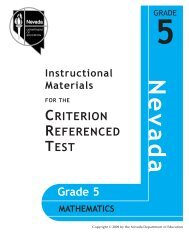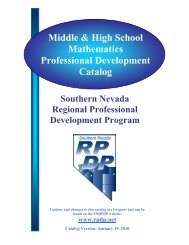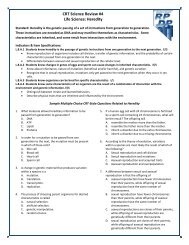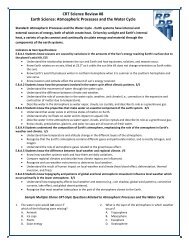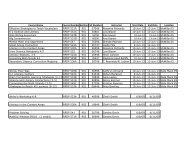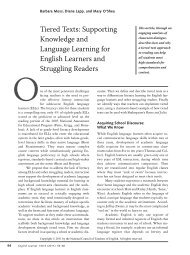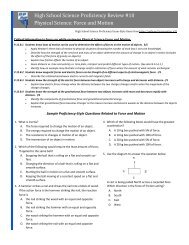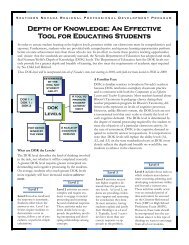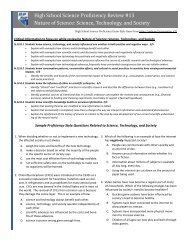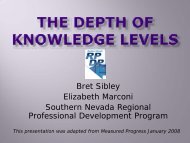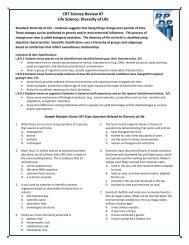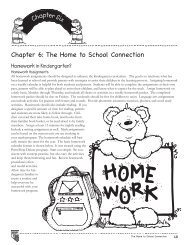Science Achievement Indicators Grade 6-8 - RPDP
Science Achievement Indicators Grade 6-8 - RPDP
Science Achievement Indicators Grade 6-8 - RPDP
You also want an ePaper? Increase the reach of your titles
YUMPU automatically turns print PDFs into web optimized ePapers that Google loves.
<strong>Achievement</strong> <strong>Indicators</strong> for <strong>Science</strong><br />
<strong>Grade</strong>s 6-8<br />
Content Benchmarks<br />
P.8.A.1 Students know particles<br />
are arranged differently in<br />
solids, liquids, and gases of the<br />
same substance.<br />
Content Standard P8A<br />
Students understand the properties and changes of properties in matter.<br />
Work at the Approaches level<br />
may indicate ability to…<br />
Work at the Emergent/<br />
Developing level may<br />
indicate...<br />
recognition that matter can exist<br />
as solids, liquids, and gases and<br />
each are different. (P.8.A.1)<br />
recognize that matter can exist<br />
as a solids liquids, and gases<br />
with distinct physical<br />
properties. (P.8.A.1)<br />
Work at the Meets level<br />
demonstrates ability to…<br />
diagram the arrangement of<br />
particles in solids, liquids, and<br />
gases. (P.8.A.1)<br />
Work at the Exceeds level<br />
demonstrates ability to…<br />
differentiate molecular motion<br />
of particles in solids, liquids,<br />
and gases. (P.8.A.1)<br />
P.8.A.2 Students know<br />
elements can be arranged in the<br />
periodic table which shows<br />
repeating patterns that group<br />
elements with similar<br />
properties.<br />
recognize that elements are<br />
listed on a periodic table.<br />
(P.8.A.2)<br />
recognize that matter is made of<br />
small particles. (P.8.A.2)<br />
explain that elements are<br />
represented by symbols in the<br />
periodic table. (P.8.A.2)<br />
predict the properties of<br />
different elements by their<br />
arrangements in groups and<br />
periods on the periodic table.<br />
(P.8.A.2)<br />
identify atoms and ions by<br />
calculating the number of<br />
neutrons, protons, and electrons<br />
(P.8.A.2)<br />
P.8.A.3 Students know methods<br />
for separating mixtures based<br />
on the properties of the<br />
components.<br />
recognize that many things are<br />
mixtures. (P.8.A.3)<br />
explain that when two materials<br />
are combined, they sometimes<br />
form a completely different<br />
material. (P.8.A.3)<br />
physically separate mixtures<br />
using the properties of matter.<br />
(P.8.A.3)<br />
experimentally apply the<br />
principles of magnetism,<br />
density, conductivity and<br />
solubility to separate mixtures.<br />
(P.8.A.3)<br />
the need of assistance to<br />
separate simple mixtures using<br />
filters, magnets and<br />
evaporation. (P.8.A.3)<br />
identify the following properties<br />
of matter: magnetism, density,<br />
conductivity and solubility.<br />
(P.8.A.3)<br />
distinguish between intrinsic<br />
and extrinsic properties.<br />
(P.8.A.3)<br />
ability to sort objects according<br />
to properties (i.e., color, size,<br />
weight, shape, texture)<br />
(P.8.A.3)<br />
August 2007 4



